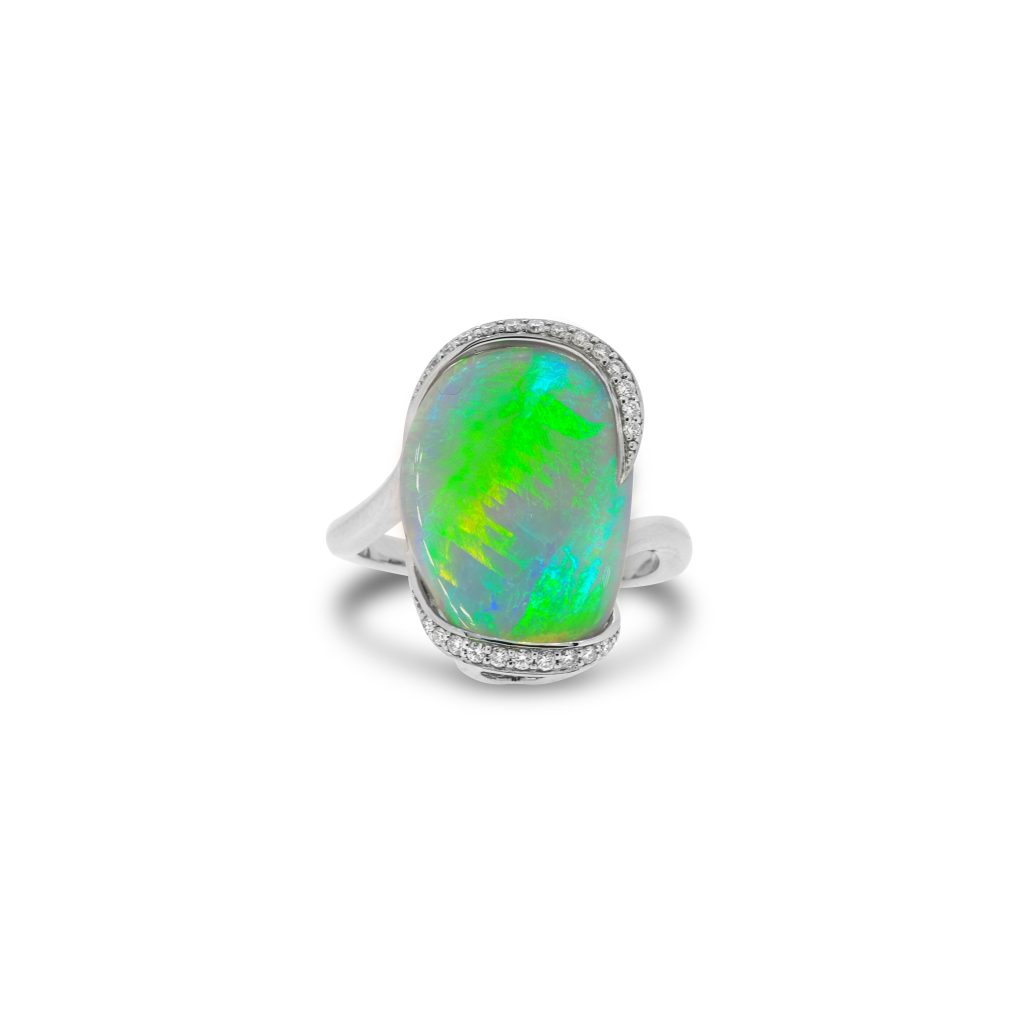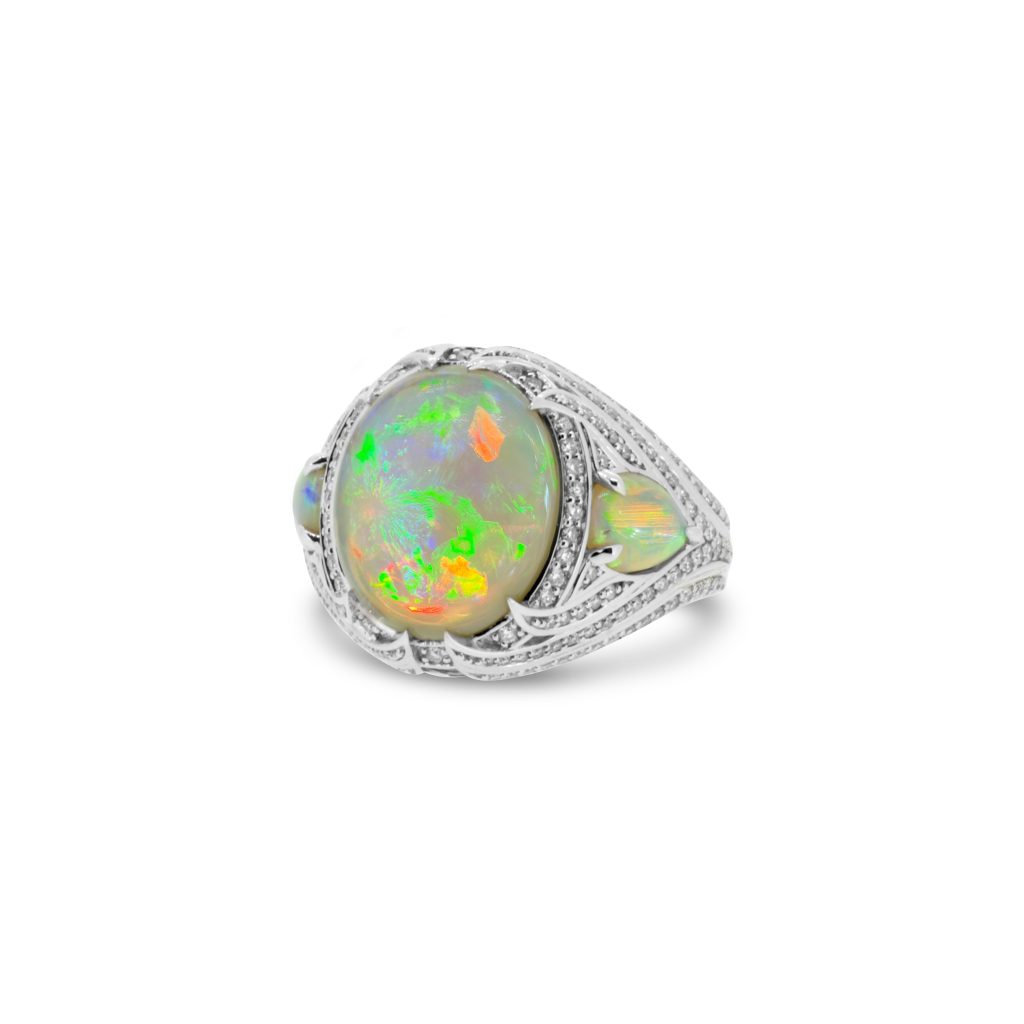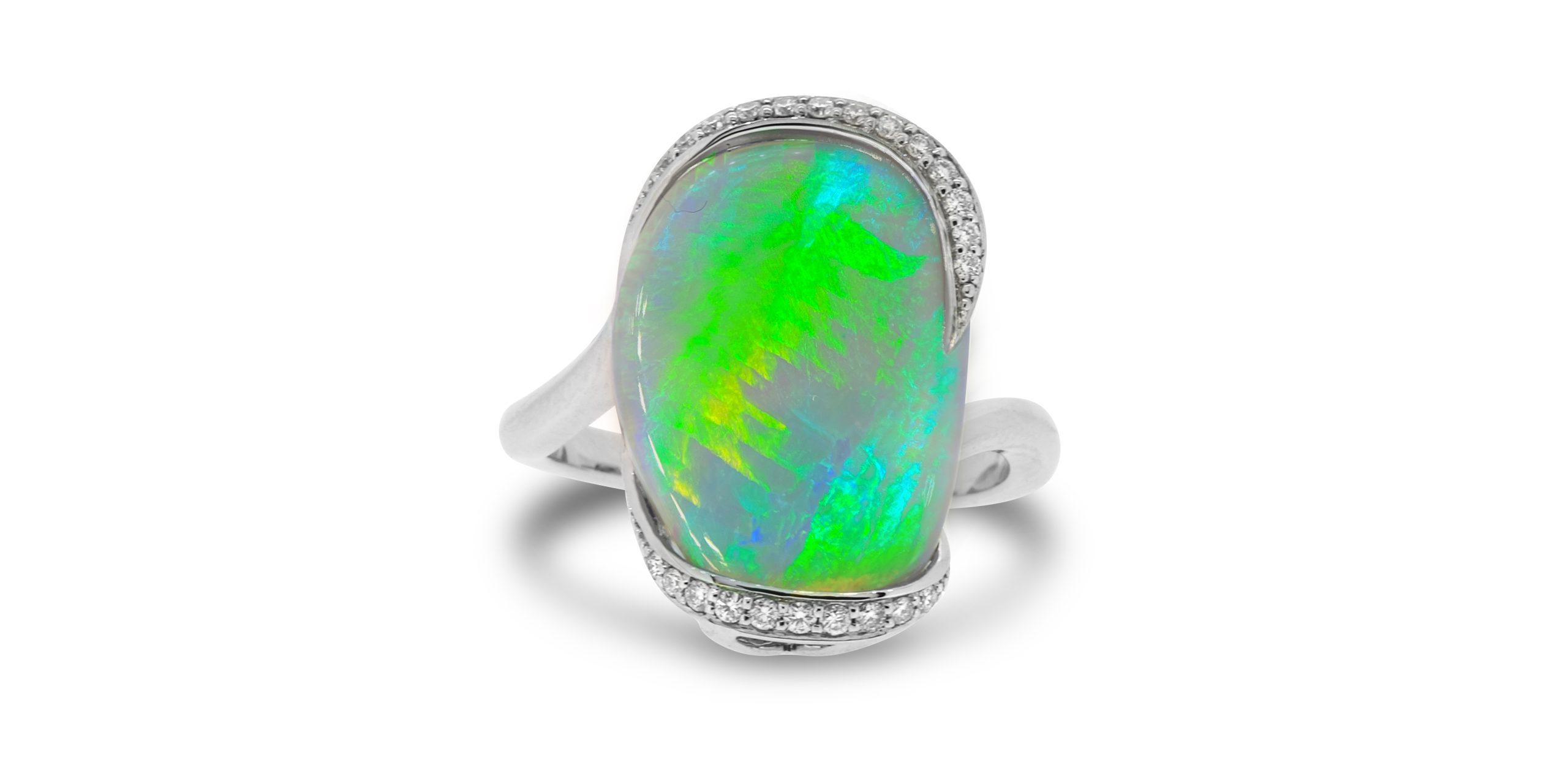Opal is a hydrous silica composed of predominantly silicon dioxide and water. The chemical composition of opal Is normally described by the general formula SiO,.nH,O.
The formula indicates that opal contains water and the value of ‘n’ is variable so the water content is variable and is known to range widely. Such a simple formula hides many of the important characteristics of how water is contained in opal, the variability in the water content and states of water, which are intricately involved in the formation of opal and may influence properties of the opal as a gemstone.
The understanding of the states of water in opal is therefore of importance. The way in which the water is contained provides clues to the mechanisms of the formation of opal.
The water contained may also be used as a probe to help elucidate the complex microstructure beyond the sphere array structure in which precious opal, in particular, is described. This article will outline the types of water present in opal that displays play-of color (POC) and how these types have been determined using chemical and physical laboratory characterization techniques.
Why Does Opal Contain Water?
In order to understand and characterize the types of water that are present in opal, the first step is to have a basic model for the formation of opal. The origin of the silica remains disputed, but it is generally agreed that opal formation is based on a dissolution-precipitation mechanism with water as the medium (Iler 1979).
Water Content of Opal
As the formation of opal is a dissolution-precipitation process, water becomes trapped in the opal as it is being formed. Opal can therefore contain significant amounts of water, from 2% to 20%, but typically the quantity of water contained in opal is 6% to 10%. Measurement of the amount of water in opal is usually carried out by thermogravimetric analysis (IG) where a sample (typically 20 to 50 mg) is heated at a constant rate (typically 1°C/min) to 1000°C
to drive off the water. The amount of water contained can then be determined from the mass change. Some typical data is shown in Figure 4 and total water contents using this technique are listed in Table 1 along with their XRD classification.
The total amount of wate8r is an important measure as it is the basis for the status of opal as a hydrous silica with the notional formula of SiO,.nH,O. Measurement of the amount of water provides a value for ‘n’, but it does not in itself help to understand how the water is contained in the opal. In order to understand how water is contained in opal, the types of water need to be identified and characterized.
Australian solid opals contain around 6-10% water, and immersing a solid opal in water will do no damage.


A doublet and triplet opal (non-solid, partially man-made layered stones) can be damaged by prolonged exposure to water. Water penetration can eventually cause the glue to deteriorate and the layers to separate, causing the opal to take on a foggy, grey, or cloudy appearance. This fact is the origin of the ‘never get your opal wet’ misconception.
Cosmopolitan Jeweeller only stock solid Opals and do not sell doublets or triplets. We have the finest quality Opals at the most competitive price. We have unset solid Opal stones, Sterling Silver Opal jewellery, as well as 18k gold and platinum Opal jewellery. We have the largest collection of Opal earrings, Opal rings, Opal pendants, Opal bangles and Opal bracelets in Sydney. We are also licensed Duty Free.







